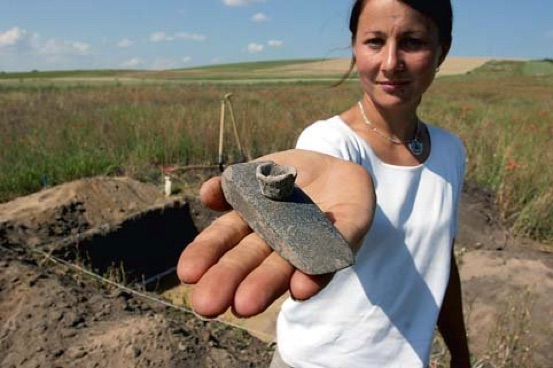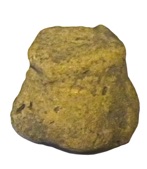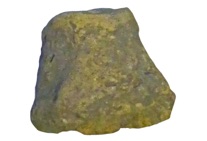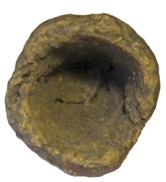More about Thimbles


‘clay’ thimbles



Magdalena and William Isbister
Clay is a material which is primarily composed of clay minerals, phyllosilicates, and varying amounts of water. It is formed by the gradual weathering of silica containing rocks by low concentrations of carbonic acid and other solvents. When an object made of clay is fired in a kiln it undergoes physical and chemical change which result in a ceramic change. Depending upon the mineral content of the clay and the firing conditions the resulting ceramic may be earthenware, stoneware or porcelain. Earthenware is porous and opaque and quite brittle. Stoneware is more dense and stronger than earthenware but is opaque too. Porcelain is less porous, much stronger and may even be translucent.
Very little is known about clay and its use in thimble making. If early thimble makers protected their fingers with clay thimbles it seem most unlikely that they would have survived, far less been identified as thimbles, in archaeological excavations. Pottery shards would most certainly not have been recognised as thimbles so that no such items seem to have been recorded in the archaeological literature.
In June 2007, an article appeared in a Polish newspaper, Gazeta Wyborczain describing the discovery of a ‘thimble’ which, it was claimed, was about 2000 years old. The ‘thimble’ was found in 2007 during an excavation in Sobkowo in the province of Świętokrzyskie voivodeship and was thought to be the oldest thimble to have been found in Europe. Inside the ‘thimble’ there was the impression of the fingernail of the person who either made, or used the ‘thimble’.

The excavation was undertaken prior to some new building, and in addition to the thimble, the remains of some Lusatian huts, including four awls, a pendant and an axe were found. The Lusatian culture existed in the later Bronze Age and early Iron Age (2500 years ago) in what is today, Poland, parts of the Czech Republic and Slovakia, parts of eastern Germany and parts of the Ukraine.
Whatever this ‘thimble’ was actually used for will never be known. It would probably not have been strong enough to push bone needles through anything but the thinnest skins, but the presence of the nail indentation suggests that at least, at some time during its life, it was placed over a finger or thumb. We doubted whether it was really a thimble.
We were surprised to read that some fifty years before the Sobkowo ‘thimble’ was discovered, another ‘thimble’ had been discovered by archaeologists from Odessa who were excavating the ancient city of Nikonium, named after the Greek Goddess of Victory, on the North – Western Black Sea coast. During the course of the excavations, a clay ‘thimble’ was found. It was thought to date to the Sarmatian occupation of the town in around the third century AD.

The ‘thimble’ was very well preserved; it was 2.7 cm high and 3.3 cm in diameter at the bottom. It was fashioned from a piece of clay and had been severely burned. On the top, traces of needles scratches could clearly be seen. This ‘thimble’ went into the store in the Odessa Archaeological Museum and was forgotten until the finding was described on a Russian internet site which was devoted to descriptions of early Russian thimbles (1).
In 2012, the same author described a third clay ‘thimble’ that was found in the Kursk region of the Middle Dnieper. The association of Roman denarii from the second century AD suggested that ‘thimble’ might predate the Nikonium thimble although both were thought to be of Sarmatian origin.


The ‘thimble’ had a conical shape with a slightly flattened apex and was 2.2 cm heigh and 3.0 cm in diameter at the bottom. An interesting feature of the thimble was that a finger could comfortably go in only one direction, as the inner opening was slightly oval in shape. There was a clearly visible semicircular indentation inside the top of the thimble which was thought to have been left by the maker’s nail in the manufacturing process.

The ‘thimble’ was made by hand without using any tools and from the concomitant findings of the Roman denarii it was assumed that this ‘thimble’ was made during the "Great Migration" period by Sarmatian craftsmen.

The Sarmatians migrated westwards from western Iran into the western part of Greater Scythia in the 5th to the 4th centuries BCE. By the 4th century AD they were in decline as a result of the migrationof the Huns from the east. The ‘thimble’ was probably made around the end of the first century AD.
The need for a fine steel needle pusher probably did not even exist by the time of the decline of the Sarmatians, steel needles not yet having reached the region from China, and it seems to us that these so called ‘thimbles’ were probably not intended for sewing at all. Alternatively steel needles may just have been arriving from the east in small numbers and Sarmatians who had not yet seen Chinese thimble rings might have devised an ‘home-made’ protector for their fingers? This seems to be somewhat implausible because steel needles at the time were items possessed by the rich only and it is doubtful whether they would have used clay to protect their fingers. The Sarmatians themselves, however, would have been too poor to own steel needles and thus would not have required thimbles. It will probably never be known, now, whether the ‘thimbles’ described above were truly used as thimbles and it will thus always remain a matter for conjecture. What they were actually intended for will most likely never be known now either. It is interesting that all three thimbles are similar in design and two have nail indentations. The eastern border of the Lusatian culture abutted on the Sarmatian lands so this may not be such a surprising finding. Clearly these objects were being made in the region in several locations. They all may have had the same purpose but we may never know what that was?
Reference
1.Klechinov VN. Clay thimble of Nikonov. http://thimbles.ru/page.php?46
Holmes: na.
Navigation
